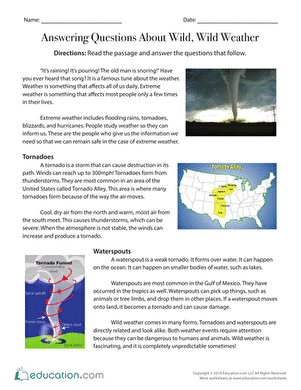Science project
Where Did All the Wild Things Go?
Difficulty Level
Medium
Cost
Minimal
Safety Issues
Adult supervision recommended when searching the net.
Project Time Frame
4-6 weeks
Objective
This project aims to tell the story of Earth’s disappearing wildlife, using transparency maps.
Project Goals
- To visually illustrate the shrinking of wildlife populations throughout the world.
- Encourage the development of new and improved methods for preserving wildlife populations.
- To endorse the ethical treatment of animals.
Materials and Equipment
- Computer with internet access
- Color printer
- Digital camera
- Transparency film (5-6 large sheets)
- Typical office/craft supplies (such as paper, pens & poster-board)
Introduction
Here’s an interesting and colorful way to show the history of endangered wildlife, and the course of its co-existence with human beings. This project will visually describe various endangered (and/or extinct) wildlife species, and also address their habitats, diets, and other areas of concern.
Research Questions
- What qualifies an animal species as being endangered or extinct?
- What causes wildlife to become endangered (or extinct)?
- What are some species of wildlife that are currently endangered or extinct?
- In what ways are endangered species protected?
- What else can be done to improve the situation of endangered wildlife?
Terms and Concepts to Start Background Research
- Climate
- Encroachment
- Endangered Species
- Evolution
- Extinction
- Topography
- Wildlife Conservation
Experimental Procedure
- Research related materials (see bibliography below)
- Find or create an outline map of the region(s) you wish to address.
- Copy map outline onto a large piece of cardboard, roughly the same size as your transparencies.
- Copy this same map outline onto each transparency sheet.
- Mark cardboard map with black lines indicating natural land features, such as rivers and mountains.
- Color the cardboard map to indicate climate conditions of different areas (include a color legend).
- On one sheet of transparency film, use wax pencils (or sharpies, or whatever works for you) to create a scene that depicts original wildlife populations in the different areas on your map.
- Lay this sheet (carefully aligned) over the cardboard sheet.
- On the next sheet of transparency film, create a scene that shows how wildlife began to diminish. Use appropriate symbols showing encroachment, disease, industrial advances, or whatever you choose.
- Use the rest of the transparency sheets in a similar manner.
- Use your imagination when creating scenes, and when working with this artistic medium. Transparencies, for instance, can be partially covered, so only portions of the previous sheets will show through. You might also experiment with the mixing of colors via layered transparencies.
- Use clear packaging tape along the sides to bind all the sheets together.
- Your finished product should show like a big colorful 6-page atlas. Each turned page will reveal new elements, with elements from previous pages still visible.
- Write a detailed report about what you learned from this project.
Bibliography
- Printable world map outline
- Accurately scaled, printable U.S. map outline
- Endangered Wildlife List
- New Scientist (General information & news on endangered species)
- Wikipedia topics: “Endangered species” and “Extinction”
Disclaimer and Safety Precautions
Education.com provides the Science Fair Project Ideas for informational purposes only. Education.com does not make any guarantee or representation regarding the Science Fair Project Ideas and is not responsible or liable for any loss or damage, directly or indirectly, caused by your use of such information. By accessing the Science Fair Project Ideas, you waive and renounce any claims against Education.com that arise thereof. In addition, your access to Education.com's website and Science Fair Project Ideas is covered by Education.com's Privacy Policy and site Terms of Use, which include limitations on Education.com's liability.
Warning is hereby given that not all Project Ideas are appropriate for all individuals or in all circumstances. Implementation of any Science Project Idea should be undertaken only in appropriate settings and with appropriate parental or other supervision. Reading and following the safety precautions of all materials used in a project is the sole responsibility of each individual. For further information, consult your state's handbook of Science Safety.
Education.com provides the Science Fair Project Ideas for informational purposes only. Education.com does not make any guarantee or representation regarding the Science Fair Project Ideas and is not responsible or liable for any loss or damage, directly or indirectly, caused by your use of such information. By accessing the Science Fair Project Ideas, you waive and renounce any claims against Education.com that arise thereof. In addition, your access to Education.com's website and Science Fair Project Ideas is covered by Education.com's Privacy Policy and site Terms of Use, which include limitations on Education.com's liability.
Warning is hereby given that not all Project Ideas are appropriate for all individuals or in all circumstances. Implementation of any Science Project Idea should be undertaken only in appropriate settings and with appropriate parental or other supervision. Reading and following the safety precautions of all materials used in a project is the sole responsibility of each individual. For further information, consult your state's handbook of Science Safety.













